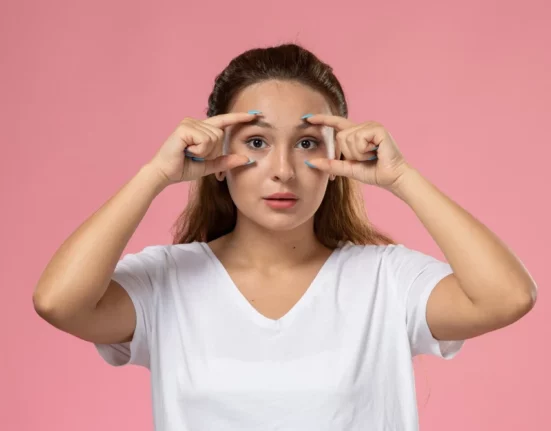Hair transplant principle
The hair follicles in the back of the human body are taken as the source, and after being separated into single or multiple hair follicle units, the hair follicle units are transplanted to the parts to be transplanted, such as the head, eyebrows, eyelashes, beards, chest, Eyelashes, genitals, etc., allow them to survive and grow naturally in new parts, so as to achieve the purpose of repairing the local hair distribution density and achieve beautiful results. In fact, hair transplantation is also a kind of “demolition of the eastern wall to supplement the western wall”, to achieve a concealed, visual hair growth effect.
Internationally recognized hair transplant technology
(1), FUT
The single hair follicle cultivation and regeneration technology extracts hair follicles from the back of the occipital region and uses patented fine instruments to transplant them.
Suitable: For those with large or severe hair loss area, a maximum of about 3,000 units can be taken at one time, leaving thin linear scars in the hair removal area after surgery.
2), FUE
Non-surgical hair transplantation technology uses a micro dissociation device to extract hair follicles individually from the posterior occipital part, and transplants them to the hair loss site individually according to the hair growth direction. Suitable for: people with small hair loss area or perfection, single hair follicle extraction, no sutures and sutures, faster healing, no traces left, can take more than 3000 units at a time.
The hair transplantation technologies use in Islamabad are FUT and FUE. First, compare the following various technologies in terms of preoperative detection, hair removal area, hair removal method, hair transplantation method and other differences.
Three steps for hair transplant
First: take a fusiform flap at the posterior occipital region, and then suture the skin under reduced pressure, and the outer layer is sutured continuously. After the wound was healed, there was no obvious scar, only a thin scar was hidden in the hair. Since a small piece of hair was taken in the longitudinal direction of a hair follicle tissue, there was no significant change in the appearance of the original posterior occipital hair.
Second: Hair follicle separation: The removed skin flap is divided into several small transplant units without damaging the hair follicle, which is also called transplanted embryos. Each transplanted embryo contains 1-3 hair follicles (the size of the transplanted embryo is determined according to the surgical method) This process is very strict and requires medical staff to have a high degree of patience and care, otherwise it will damage part of the hair follicles and cause loss to the patient.
Hair transplant effect
FUT —– (follicle unit transplant), multiple rhombic skin flaps of the hindbrain were extracted, the hair follicles were separated, and then transplanted to the hairless area.
Advantages: It is suitable for those with large or severe hair loss areas. It can take up to about 3000 units at a time, and the postoperative effect is ideal. The price of the three is the lowest and the effect is ideal. Disadvantages: A palmprint-sized scar remains in the donor area after surgery.
FUE —– (follicle unit extration) Because a single hair follicle is extracted and a single hair follicle is implanted, the wound area is small, so after surgery, after the blood pupa has faded, no scars can be seen in the whole. After 6-9 months, the hair can grow To the original hair length. After hair transplantation, there will be a small change in the number of hair follicles, and a small change in the number of hair, but the eyes cannot tell.
The hair transplantation effect is guaranteed first. According to the newer technology, the surgical method is to remove a fusiform flap with healthy hair follicles and hair shafts from the posterior pillow of the autologous brain after local anesthesia, and use high-precision technology to process it. After treatment, the healthy hair follicles are separated from the hair embryos, and then transplanted to the desired site according to a certain rule. After several months of survival, development, and growth, permanent natural hair groups can be formed to cover the bald area. And truly traceless.
Second, the effect of hair transplantation is worth noting that within two weeks after surgery, you should avoid rubbing the hair transplantation area so as to avoid damage to the hair in the transplantation area and affect the effect. Because vigorous exercise will increase blood circulation in the scalp and may cause wound bleeding in the transplantation area, so Avoid strenuous exercise or physical contact for three weeks after surgery.
Third, the hair survival rate and surgical effect of hair transplantation are directly related to the doctor’s clinical skills and the degree of precision of the operation. Poor technology not only fails to achieve the purpose of treatment, but also wastes precious hair residual supply areas. Therefore, it is necessary to carry out Patients with hair transplantation should go to regular hospitals and seek doctors with rich clinical experience to achieve safe and ideal hair transplantation results.
Four basic characteristics of ideal hair
(1) Elastic (2) Soft and bright (3) Tight structure (4) Black
Hair transplant characteristics
Hair is naturally moisturized, beautiful and soft, and easy to comb.
Mechanism: Good blood circulation, normal moisturization to form a layer of this acidic protection net, oil secretion is normal.
Care: Choose gentle, high-moisture products to protect existing hair.
Recommendation: Shampoo 3-5 times a week.
Dry hair
Features: dry, tightened, sensitive and itchy hair, tarnished hair, lack of elasticity, lifeless, and make hair fall off quickly
Mechanism: due to lack of oil secretion, external influences, such as excessive use of hairdressing equipment, improper electric hair, keratin loss caused by staining tract.
Care: Choose moisturizing shampoo and conditioner, gently massage the scalp and hair during use, choose mild electric hair and hair dye products or reduce the number of times, regularly use repair products to repair damaged structures and strengthen protection Revitalizes scalp and hair.
Oily scalp and hair
Features: Hair is too greasy and unclean, loses elasticity, becomes loose, difficult to style, and does not last long.
Mechanism: Excessive secretion of fat, dietary nutrition: such as absorption of too much sweet food, starch or high fat foods.
Nursing: Remember not to: 1. Brush vigorously and massage the scalp. 2. Use too strong shampoo. Use a proprietary shampoo with balanced oils. 3. Hot water cannot be used for flushing, only warm water can be used. After shampooing every day, use a hair lotion that tightens the scalp and controls oil secretion.
Abnormal hair loss
Causes of hair loss:
(1) External factors:
- Take medicine. 2. Bacterial infection. 3. The shampoo is too strong. 4. Greasy dandruff clogs pores. 5. Improper blowing, dyeing, electricity, and bleaching.
(II) Internal factors:
- Heredity, increase in age. 2. Inadequate nutrition, lack of vitamins and amino acids. 3. Hair mother cells and hair follicles are injured. 4. Vascular disorders. 5, endocrine disorders, hormone secretion is not coordinated.
Hair loss prevention:
Keep the scalp clean and wash your hair frequently to promote capillary patency, massage more, promote blood circulation, rest more, fully absorb nutrients, and take more vitamins A, D, B6, etc. The scalp is often scalp nutrition and self-maintenance.
Hair pH
The pH value of hair is 4.5-5.5. Strong acids and weak alkalis are not good for hair.
Nutritional ingredients needed for hair: Vitamin B5, protein, silk protein, amino acids, animal and vegetable oils, placenta, moisture, etc. These all play a nutritional role in the hair.
In a healthy state, the hair can grow about 1 cm a month, but the growth rate of the hair is not absolutely constant, and it is also affected by the season and age. Hair grows faster in spring and summer, but is slower in autumn and winter.
After fully grasping the structure of the hair and understanding the characteristics of the hair, it is necessary to carry out appropriate trimming.
Normal hair, normal sebum secretion, shiny, elastic.
Greasy hair, excessive sebum secretion, the epidermis of the head and hair are sticky.
Dry hair, because the secretion of sebum is too little, there is no gloss, there is a feeling of dryness. It can be argued that the nature of hair is the same as that of skin, facial sebum belongs to dry people, and hair is also dry.
Factors affecting hair transplantation
- Methods of hair transplantation:
Only the equipment used is fine and the space it takes up is small, so that the surrounding hair is not lost, and the density of the hair transplant is high. At the same time, because of the fine equipment, the scalp trauma can be minimized and the skin blood flow is restored quickly. There was no obvious scar on the scalp in the hair transplant area.
- The team of hair transplant experts has a high level of technology and a fine division of labor:
Hair follicles are small and numerous, and hair transplantation requires high care, eyesight, and endurance of doctors. If you rely on 3-4 doctors or even fewer doctors to operate, even if the doctor’s starting point is good, the hair transplantation technology and actual conditions are Unable to achieve objective results, that is, having more than enough heart and power. Hair transplant relies on a team’s technical level, tacit understanding and careful division of labor. Any link in hair transplant cannot be ignored. Only when multiple doctors cooperate with each other to ensure the quality of the links they are responsible for can the best hair transplantation effect be achieved;
- Equipped equipment:
According to reports, microscopy and hair follicle separation, hair transplantation methods, determine the effectiveness of hair transplantation and hair follicle utilization has become an indispensable item. Hair transplant patients have enough hair in the back of the pillow, and it is also necessary for the hair transplant doctor to have sufficient level of hair.
Indications for hair transplant surgery
Scar alopecia
Autologous hair transplantation is preferred. If the scar is small, skin reshaping can be considered to reduce the scar to a minimum before performing hair transplantation.
Seborrheic hair loss
Should be used to control oil secretion, then consider autologous hair transplantation.
Neurogenic alopecia
Within six months after the beginning of hair loss, surgery is not advocated. Due to the curative properties of useful drugs, if hair is not grown for six months after treatment, autologous hair transplantation is considered.
Diseased hair loss
First treat the primary disease. If the primary disease is not cured for six months, hair transplantation is considered.
Drug-induced hair loss
Generally, hair can grow naturally 3 to 6 months after the drug is stopped, without surgery, but special circumstances are not ruled out.
Contraindications for hair transplant surgery
First, people with alopecia in a large number of hair loss stages should not choose hair transplantation surgery in a short time. Because hair transplantation surgery simply redistributes the hair follicles to achieve the purpose of coverage, it cannot control hair loss or increase the number of original hair follicles. So remind For the majority of patients with hair loss, do not rush to wait until the hair loss has stabilized before choosing hair transplant surgery, so that the ideal transplantation effect will be achieved and it will be maintained for a long time. For patients in the period of alopecia, drug control is ideal. Method: The real medicine for hair loss can be afforded by most working-class people, so don’t worry about the cost, provided that you choose the Chinese medicine standard.
- Patients with alopecia areata should not choose hair transplantation surgery in a short period of time. Especially baldness and general baldness will cause greater pain to the patient, and the psychological pain is even worse. The patient is eager to seek medical advice. The mood is understandable, but patients with alopecia areata should know the fact that alopecia areata is self-limiting. Although its course can last for months or even up to two years, most patients can be completely or partially natural. Healing. Correctly understand the nature of your hair loss, do not choose blindly hair transplantation. Alopecia areata patients are short-term irritated hair loss, before it is uncertain whether they will grow again
Advantages of hair transplant surgery
Features of hair transplant
Design your hairline according to your head, face, temperament, and age. Transplant according to normal hair growth direction and distribution. There are no marks or scars left in the transplant area. The hair after transplantation is no different from the surrounding hair and grows with the growth of the surrounding hair.
The day before the hair transplant
To clean the scalp and hair, take a shower the night before and the morning of the hair transplant. Wash your hair carefully with shampoo one day to keep your hair clean.
Notes on the day of hair transplant
Dressing: Large, comfortable and soft front buttoned or zippered clothes. Avoid inconvenient pullovers or sweaters. Because the surgical transplantation area cannot be touched for 3 days after surgery, try not to wear pullovers.
Diet: Do not fast on a normal diet. Avoid alcoholic beverages and greasy foods. Do not try foods you haven’t eaten on the day of surgery to avoid allergies or indigestion.
Patients wearing wigs should remove their wigs and wash their hair.
Hair transplant system
The hair transplant system is an auxiliary tool used by the operator before the hair follicle transplantation. It is used to judge whether the hair follicles to be transplanted in the hair follicle area meet the transplantation standards and how high the survival rate after transplantation. It mainly detects eight major items: 1 .Signing of hair loss level; 2.Detection of scalp hair follicle density; 3.Sebaceous gland metabolism test; 4.Scalp toxin test; 5.Follicular cell test; 6.Allergic scalp test; 7.Hair trace element test; 8. Hair damage detection.
Generally, hair transplantation uses a special device to cut out the tissues around the hair follicles completely from the scalp in situ, and then transplant it to a position where the hair needs some preparation and has the conditions to accept the hair. Therefore, calculate the area of hair loss on the scalp and It is very important to calculate the thinness of the guest’s hair, that is, the number of hair follicles in the hair loss area of the guest needs to be calculated. Only after this number is obtained, the operator can know how many hair follicles need to be removed and implanted. If you take less in one operation, you may need to take the skin again in the second operation. If you take more, you will bring more trauma to the guests. Usually, the operator of the original method needs to measure the guest’s hair loss with a ruler before the operation. Area and experience to determine the number of hair follicles per square centimeter of guests.
After the system finishes the analysis of hair loss level, it needs to check the hair follicle density of the client. The CBS hair transplant software uses a 60-fold magnification. Through this density analysis software, the number of hair follicles per square centimeter of this guest can be accurately calculated. Based on this data, you can calculate how much skin the operator needs to take from the guest.
The emergence of hair transplantation system helps operators obtain data more quickly and accurately, and also reduces the pain of customers.
Hair transplant complications
- Bleeding It is normal to see slight bleeding after wound and transplantation. Use a sterile gauze to lightly press the bleeding area for 3 to 5 minutes to stop bleeding, or use a hemostatic medicine. Before and after surgery, avoid irritating foods, abstain from alcohol, stop using aspirin, and drugs such as vitamin E, promoting blood circulation and removing blood stasis; it will help to avoid bleeding.
- Infection The principle of aseptic operation is followed during hair transplantation surgery. Antibiotics will not cause infections after surgery. If you have any discomfort or pain in your wound, you can take 1 tablet orally and take it every 4 hours.
- Swelling Some patients with more severe hair loss will have mild edema on the forehead and bridge of the nose on the third or fourth day after surgery, which is normal. To reduce swelling, you can: use 2-3 pillows to raise your head when you sleep in the first three days after the operation; apply ice packs on the forehead and the non-hair transplanted areas on the sides of the head to reduce edema, and it can usually be recovered within a week. No special treatment is required; note: please do not apply ice packs to the transplant site.
- Endogenous hair and foreign body reaction The cause is that the useless hair follicles are not removed in the preparation of the hair embryo, which causes the hair to forcibly grow into the subcutaneous tissue and stimulate the formation of foreign body reactions. The important thing is to prevent it;
- Epidermal cyst;
- Hair loss caused by transient surgery, also known as terminal hair loss;
- Scars Hair transplantation will not leave obvious scars, linear scars will be left in the occipital donor area, which is not obvious when there is hair covering;
- The operation area feels dull or numb, and can usually recover on its own;
- Transplanted hair is necrotic.
How much does it cost to grow hair?
The hair transplant industry is gradually growing, and various quotations make many hair transplant patients wonder how to choose. There are various types of hair transplantation technologies, and the prices of the corresponding hair implants brought by different hair transplantation technologies are also different. Hair transplantation technology continues to increase from the mark hair transplantation technology to the markless hair transplantation technology. Therefore, the overly cheap price may be that the technology used by their hospitals is relatively cheap. Or maybe their hospitals and doctors are not well qualified. But is the more expensive hair planting the better?





